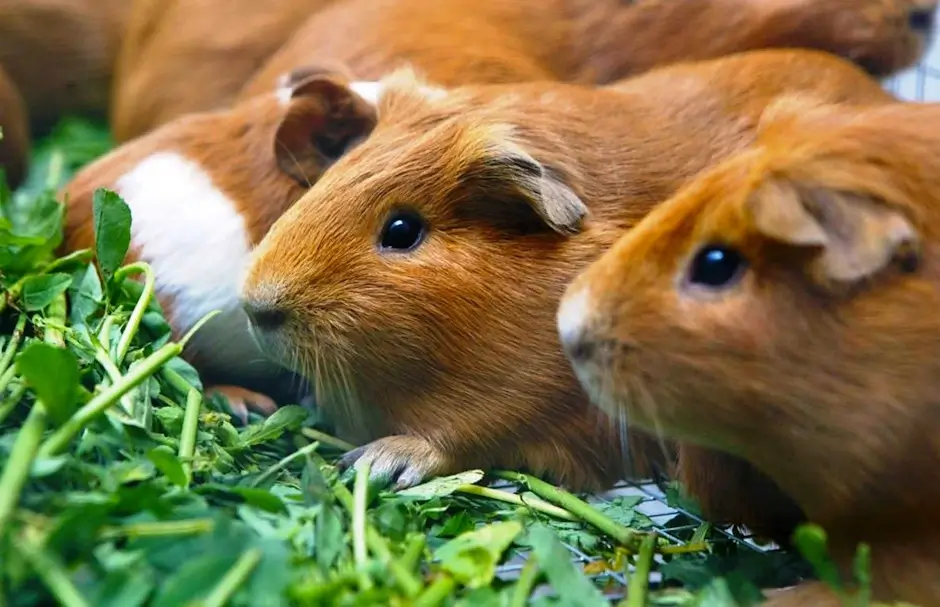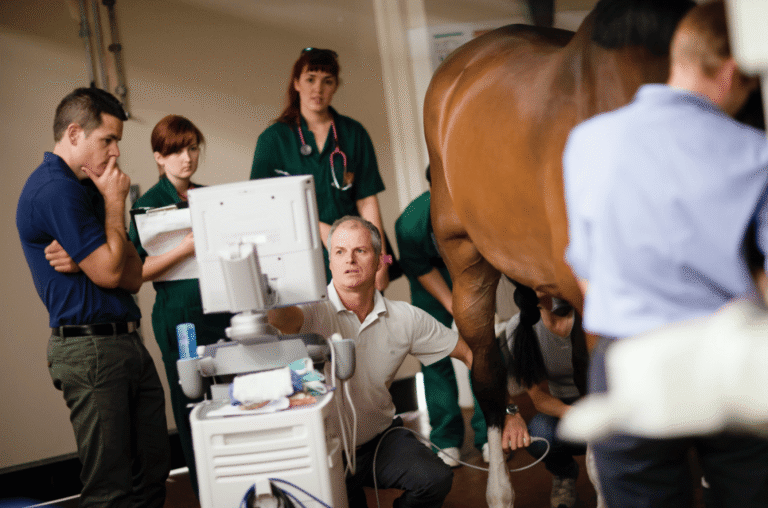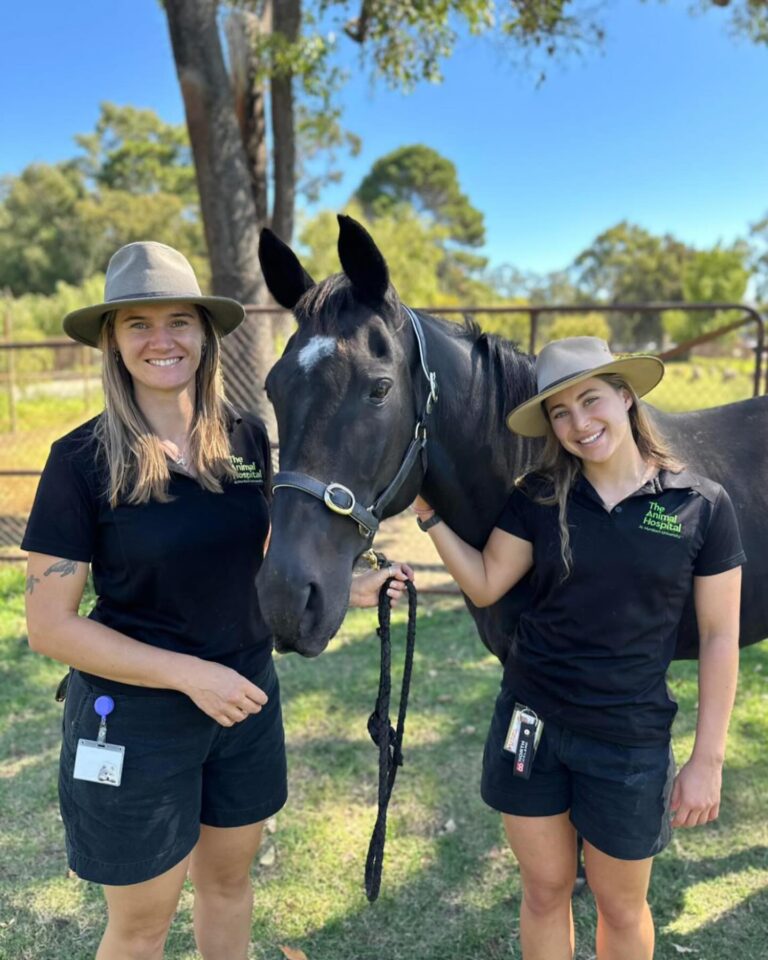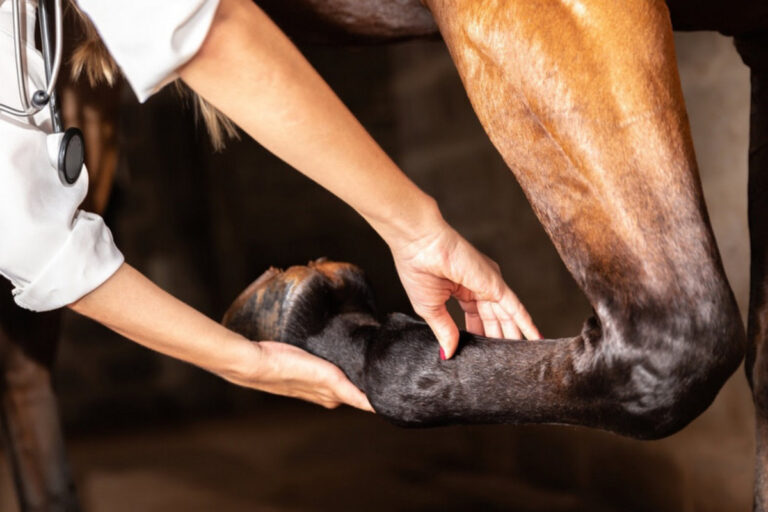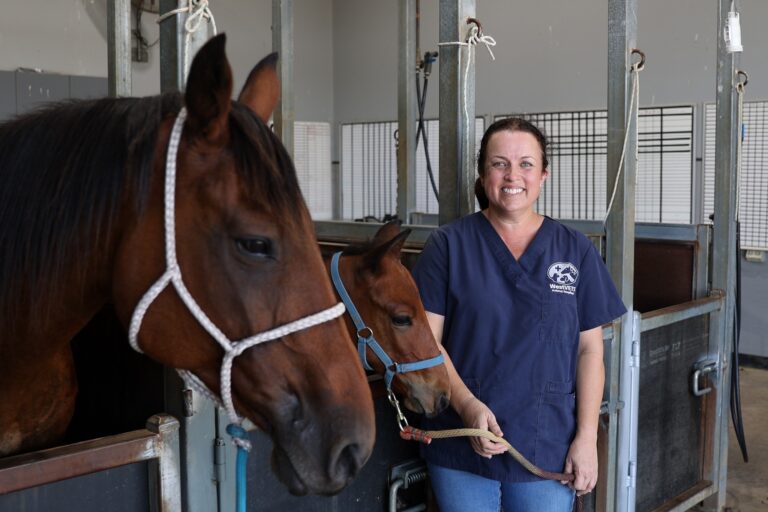As an experienced livestock farmer with over two decades in the Andean highlands of Peru, I’ve dedicated much of my career to sustainable animal husbandry, including raising guinea pigs, or “cuy” as we call them locally. These small rodents have been a cornerstone of Peruvian agriculture since pre-Incan times. In fact, according to recent data from Peru’s Ministry of Agriculture, over 25 million guinea pigs are raised annually for meat production in the country.
Raising guinea pigs for meat in Peru is a practical, low-cost way to generate income and nourish your household. Cuy farming is an eco-friendly alternative to larger livestock. It requires far less land and water, which aligns perfectly with the challenges of our high-altitude terrains.
If you’re a beginner farmer or someone looking to diversify your operations, this guide will walk you through the essentials, drawing from hands-on experiences.
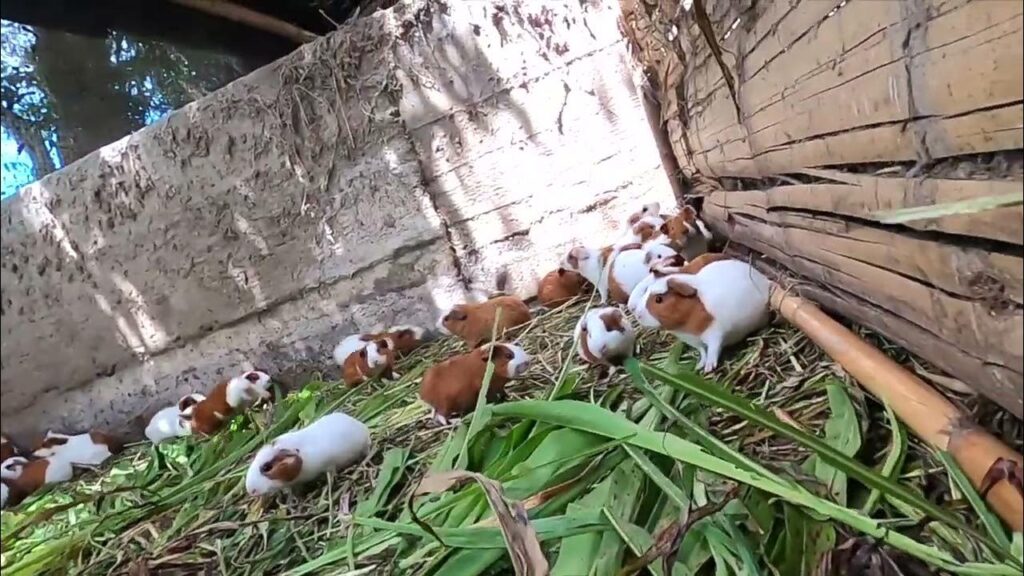
The Historical and Cultural Significance of Guinea Pigs in Peru
Guinea pigs have woven themselves into the fabric of Peruvian life for millennia, long before the arrival of European colonizers introduced larger animals like cows and pigs.
Archaeological evidence from sites in the Andes suggests domestication began around 5,000 years ago, where cuy served not only as a food source but also in rituals and medicine among indigenous communities.
In my early farming days, I learned from elders in Ayacucho how their ancestors used guinea pigs in ceremonies to honor Pachamanca, the Earth Mother. They are viewed as symbols of fertility and abundance due to their rapid reproduction rates. Today, this legacy continues; the second Friday of October is National Guinea Pig Day in Peru.
From a practical standpoint, cuy farming has always been accessible to smallholders like myself, who started with just a few breeding pairs on a modest plot.
Unlike intensive cattle operations that demand vast pastures and heavy irrigation, the guinea pig thrives in confined spaces with minimal inputs.
This cultural reverence translates to real-world benefits: families in rural Peru often raise them alongside crops, using manure as natural fertilizer to boost soil health without synthetic chemicals.
Over the years, I’ve seen how integrating cuy into mixed farming systems not only sustains livelihoods but also preserves biodiversity in fragile ecosystems.
As we transition to modern practices, honoring this history ensures that new farmers respect the animal’s dual role as both provider and cultural icon.
The enduring appeal of guinea pigs lies in their adaptability to Peru’s diverse climates, from the cool highlands to semi-arid valleys.
In regions like Cajamarca, where production leads the nation with millions of animals annually, farmers like those I’ve mentored pass down knowledge of selective breeding to enhance meat yield.
This blend of heritage and utility makes cuy farming a resilient choice amid climate variability.
Selecting the Right Breeds for Meat Production
Choosing the appropriate guinea pig breed is the foundation of a successful meat farming operation in Peru, much like selecting seed varieties for crops.
For meat-focused production, we prioritize breeds that offer high growth rates, efficient feed conversion, and substantial carcass weights.
The “Peru” breed, developed by the National Institute of Agrarian Innovation in 2004, stands out as a modern favorite; it reaches a market weight of about 1 kilogram in just 56 days, compared to 160 days for traditional lines, according to institute data. This genetic improvement, achieved through selective breeding, has revolutionized small-scale farms by reducing rearing time and feed costs. It allows me to harvest litters more frequently and stabilize income during lean seasons.
Other reliable options include the Andino and Inti breeds, both optimized for meat yield with average adult weights of 1.5 kilograms and carcass yields around 70-76%, as detailed in studies from Peru’s La Molina National Agrarian University. In my experience starting out in the highlands, the Andino’s resilience to cooler temperatures made it ideal for high-altitude farms, where it grew robustly on local forages like alfalfa without needing supplements.
These breeds differ from pet varieties exported abroad, which are smaller and less muscular; for instance, the Criollo, a native type, is hardy but yields only about 750 grams, better suited for backyard breeding than commercial meat.
Selecting from certified sources, such as IVITA research stations, ensures disease-free stock and genetic purity, preventing issues like inbreeding that I’ve seen plague unregulated herds.
When sourcing breeding stock, I always advise beginners to visit local markets or cooperatives in regions like Cusco or Arequipa, where vetted animals are available at around 10-15 Peruvian soles (about $3-4 USD) per pair.
Aim for a ratio of one male to seven females to maximize litters, as recommended by Heifer International’s programs in Peru, which have distributed over 23,000 guinea pigs to families since 2000. This setup boosts reproduction; females can produce 3-5 pups per litter up to four times a year.
Over time, I’ve crossbred Andino with Peru lines to enhance hybrid vigor. These crossbreeding experiments result in healthier offspring with better meat quality.
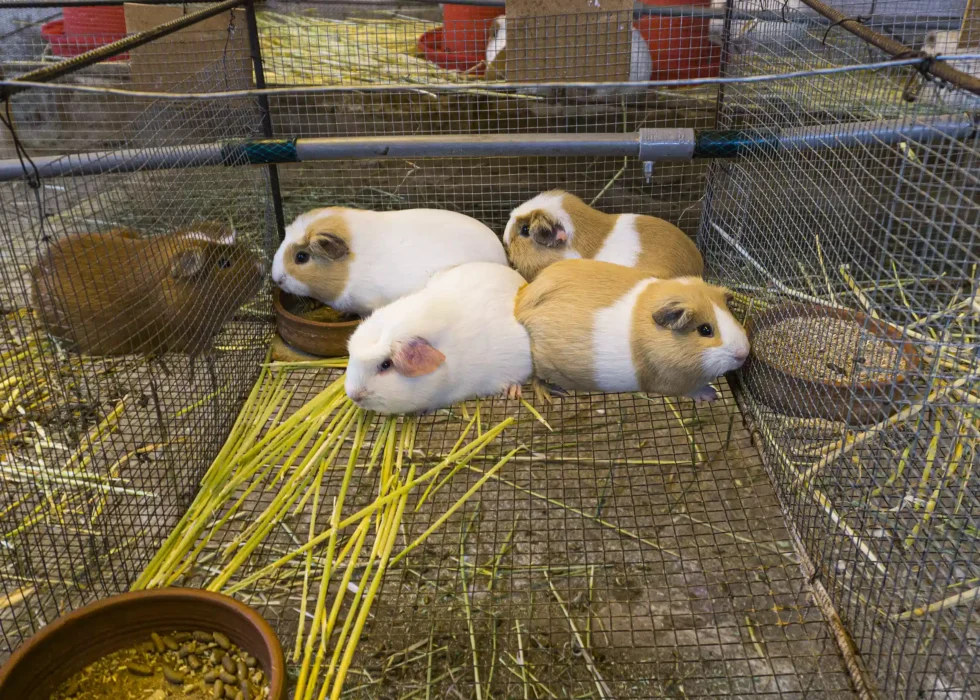
Setting Up Your Guinea Pig Farm Infrastructure
Establishing the right infrastructure for guinea pig farming in Peru requires thoughtful planning to balance cost, animal comfort, and biosecurity, lessons I learned the hard way during my first expansion in the 1990s.
Basic setups can start small, using local materials like adobe bricks for enclosures, which provide natural insulation against the Andes’ temperature swings.
On my farm, I began with simple pens measuring 1 square meter per 10 animals, elevated slightly off the ground to prevent dampness and predators; a design inspired by traditional Andean methods but improved with wire mesh flooring for easy waste collection. This allows manure to drop through for immediate use as fertilizer, in reduction of environmental runoff.
Ventilation is crucial in Peru’s variable climate; enclosures should have mesh sides for airflow while shielding from direct sun and rain, maintaining temperatures between 18-24°C to avoid heat stress, which can spike mortality rates.
I’ve incorporated shaded outdoor runs for free-range elements, mimicking natural behaviors and improving meat quality through better muscle development, though intensive caged systems are common for higher densities: up to 20 animals per square meter in controlled environments.
Water and feed troughs made from recycled plastic or clay ensure constant access, with automatic drinkers preventing contamination; in my setup, this cut water waste by 30%.
For larger operations, partitioning pens by age and sex prevents aggression and supports rotational breeding, a practice that boosted my litter survival.
Investing in basic biosecurity, like footbaths and quarantine areas for new stock, is non-negotiable to combat diseases like lymphadenitis, a bacterial infection prevalent in Peru. I disinfect enclosures weekly with lime solutions, which also neutralizes odors.
Scaling up, community cooperatives in Apurimac have shown me how shared facilities such as communal feed storage cut costs while fostering knowledge exchange.
Overall, a well-designed infrastructure improves productivity and ensures ethical treatment, with the OIE emphasizing welfare in rodent production to prevent zoonotic risks. Starting small and iterating based on local conditions has been key to my farm’s longevity.
Transitioning from infrastructure to daily care, proper feeding forms the backbone of healthy guinea pig growth, directly influencing meat yield and farm sustainability.
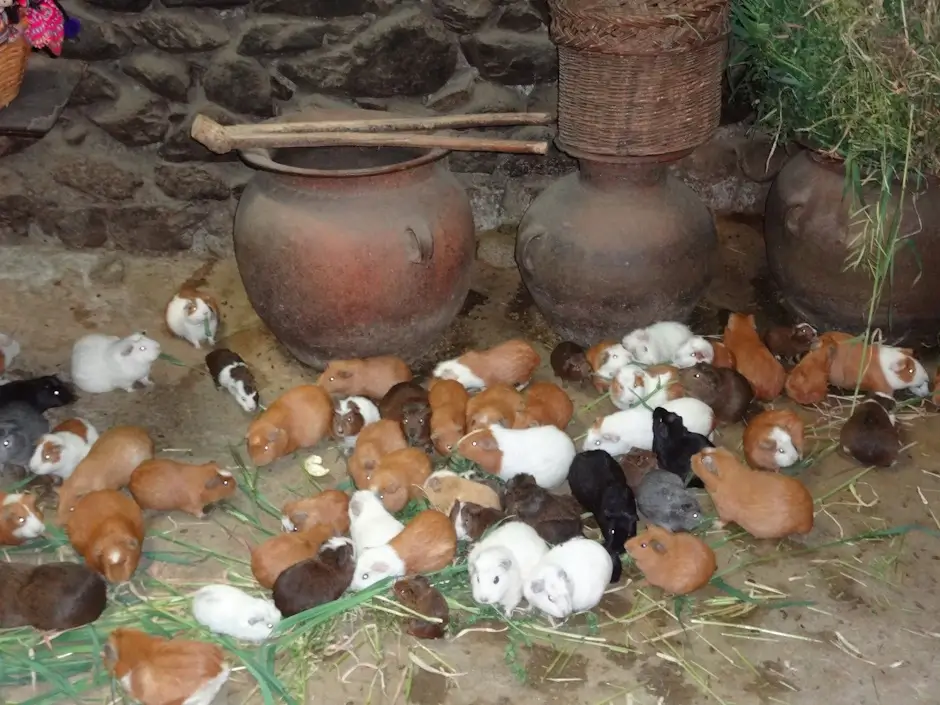
Nutrition and Feeding Strategies for Optimal Growth
Feeding guinea pigs for meat production in Peru demands a nutrient-dense diet that leverages local resources, a strategy I’ve refined over years to maximize growth while keeping costs under 20% of revenue.
Primarily herbivores, cuy thrive on high-fiber forages like fresh alfalfa or oat hay, which provide essential roughage for their digestive systems; about 80% of their intake should be grass-based to prevent bloat.
In the highlands, I supplement with kitchen scraps and vegetable trimmings like carrot tops and cabbage leaves, ensuring vitamin C intake since guinea pigs can’t synthesize it themselves; a deficiency leads to scurvy.
Commercial pellets, formulated with 16-18% protein from soybean meal, round out the diet at 20-30% of feed, but I blend my own using ground corn and minerals to avoid dependency on imports.
Comparing free-range versus intensive systems, the former allows natural foraging, improving meat flavor through diverse nutrients but risking parasite exposure, while caged setups with controlled feeds yield faster gains. My intensive pens achieve 500g in 8 weeks versus 10 in free-range.
Water is vital; clean, fresh supply via nipple drinkers prevents dehydration, especially in dry coastal areas where I’ve consulted.
During breeding, I boost calcium with crushed eggshells to support lactation.
Sustainable practices, like rotating pastures to prevent overgrazing, mirror crop rotation and cut soil erosion. Monitoring intake (around 50-100g per animal daily) ensures balanced growth without waste.
As feeding lays the groundwork for health, vigilant disease management becomes the next critical step to safeguard your herd’s vitality and productivity.
Health Management and Disease Prevention
Maintaining the health of guinea pigs in a Peruvian meat farming context requires proactive vigilance, informed by my encounters with common ailments in humid valleys where parasites thrive.
Routine vaccinations aren’t standard for cuy, but deworming every 3-4 months with ivermectin-based treatments prevents internal parasites like coccidia that can wipe out litters.
In my farm, I’ve implemented a biosecure routine: isolating new animals for two weeks and using herbal repellents like neem leaves in enclosures to deter external mites.
Nutrition ties directly to immunity; deficiencies in vitamin C manifest as lethargy and poor weight gain, so I fortify feeds with guava leaves, a local remedy that boosts resilience without antibiotics.
Distinguishing intensive from free-range health challenges, the former minimizes exposure but demands strict sanitation to avoid respiratory issues from ammonia buildup, while the latter risks predation but builds natural immunity; I’ve seen free-range herds suffer fewer chronic diseases but higher acute losses.
Regular checks for signs like swollen lymph nodes (indicating streptococcal lymphadenitis, prevalent in Peru) allow early intervention with penicillin.
Quarantine and record-keeping track herd health. They enable targeted probiotics to enhance gut flora and reduce diarrhea outbreaks.
Environmental factors, like Peru’s altitude variations, influence management; in cooler highlands, I add bedding for warmth to prevent pneumonia.
With a healthy foundation, breeding strategies can then optimize reproduction for steady supply.
Breeding and Reproduction Practices
Breeding guinea pigs for meat in Peru hinges on understanding their prolific nature, an aspect I’ve leveraged to double my farm’s output over a decade.
Females reach sexual maturity at 4-6 weeks, with gestation lasting 59-72 days and litters averaging 3-5 pups: up to four litters yearly per doe.
I maintain a 1:7 male-to-female ratio in separate pens to control mating and avoid inbreeding. I introduce males rotationally for 7-10 days to ensure conception rates above 80%.
This controlled approach, contrasting free-range haphazard pairings that risk genetic dilution, yields uniform litters suited for meat, with the “Peru” breed’s enhanced fertility producing heavier offspring faster.
Weaning at 21 days allows does to recover quickly. On my farm, I track cycles with simple charts, culling unproductive animals humanely to maintain herd vigor; a practice that boosted my average litter size from 2.5 to 4.
In intensive systems, artificial lighting mimics day length for year-round breeding, but I favor natural cycles tied to seasons, reducing energy use and environmental impact.
Hybridizing Andino with Inti lines has improved hybrid vigor, increasing pup survival by 20%, aligning with sustainable genetics programs from Peruvian agronomy institutes.
Post-birth, providing nesting materials like soft hay fosters bonding, ensuring healthy starts.
Harvesting follows breeding success.
Harvesting and Processing for Market
Harvesting guinea pigs for meat in Peru must prioritize humane practices to uphold ethical standards and ensure product quality, principles I’ve upheld since my first commercial batch in the early 2000s.
At 8-12 weeks, when animals reach 800-1,000 grams, stunning via cervical dislocation or a quick blow to the head induces instant unconsciousness, followed by exsanguination for clean bleeding.
This method, faster than electrical stunning in small setups, minimizes suffering and preserves meat tenderness, contrasting less humane neck-cutting I’ve observed in unregulated markets.
Post-slaughter, immediate scalding at 60°C removes hair efficiently without chemicals, a technique from Andean traditions that reduces water use compared to modern depilation.
Processing involves evisceration and chilling at 4°C to prevent spoilage, with carcasses yielding 70% edible meat.
In my operation, I package whole or portioned (headless for urban markets) in breathable wraps, transporting to local fairs where prices fetch 15-20 soles ($4-5 USD) per animal.
Intensive systems allow centralized processing for hygiene, but free-range farms like mine emphasize on-site handling to cut emissions from transport.
Trimming organs for separate sale adds value, with livers prized for their nutrition. Compliance with SENASA inspections ensures traceability. These steps meet welfare benchmarks.
Selling your harvest effectively turns efforts into profit.
Marketing and Selling Your Guinea Pig Meat
Marketing guinea pig meat in Peru involves tapping into local demand while building a brand around quality and sustainability, strategies that transformed my small herd into a steady income stream.
Direct sales at weekly markets in places like Huancayo yield 15-20 soles per live animal, but I’ve expanded to restaurants in Lima by emphasizing organic rearing, fetching premiums up to 25 soles.
Linking with cooperatives, as promoted by World Neighbors, pools resources for bulk deals, reducing transport costs and environmental impact. My group negotiates contracts supplying 500 cuy weekly to urban eateries.
Educating buyers on nutritional benefits, like higher protein than chicken per Peru’s health institute data, counters stigma and highlights eco-advantages over beef.
Comparing channels, farm-gate sales suit beginners for low overhead, while online platforms via apps like Mercado Libre reach expat communities, substituting imports and cutting carbon footprints.
Certifications from SENASA verify health, essential for exports. Peru ships 20,000 annually to the US, per ministry reports.
Packaging as “Andean superfood” with recipes appeals to tourists, boosting sales in Cusco. Sustainable narratives, tied to FAO’s small livestock endorsements, attract eco-conscious buyers. Diversifying into value-added like frozen portions sustains off-seasons.
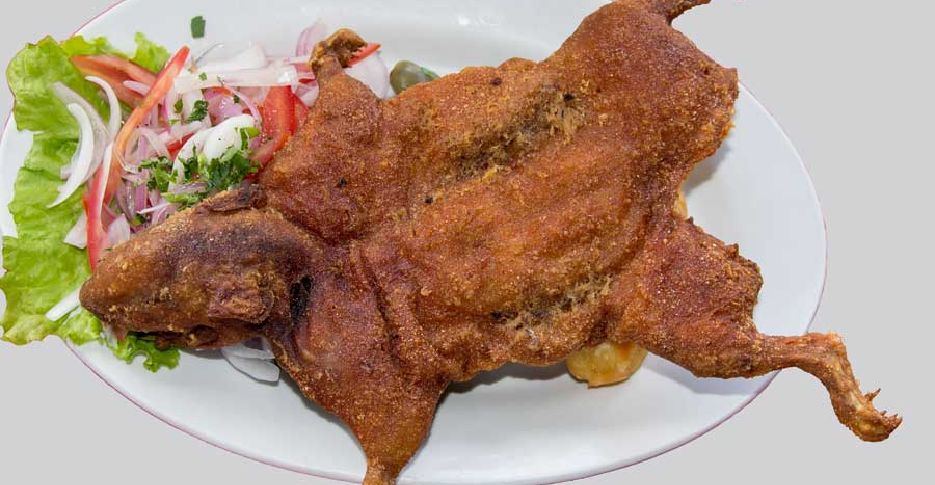
Sustainability and Environmental Considerations
Sustainable guinea pig farming in Peru minimizes ecological harm while maximizing yields, a balance I’ve achieved by integrating cuy with crop rotation on my land.
Unlike cattle, which drive deforestation, guinea pigs require 90% less land and feed, converting scraps to protein at twice the efficiency, as noted in Heifer International studies. Their manure, rich in nitrogen, fertilizes fields without synthetics, enhancing soil fertility and cutting runoff into rivers, a boon in erosion-prone Andes.
On my farm, closed-loop systems recycle waste into biogas for cooking, slashing methane emissions compared to open lagoons.
Free-range versus intensive: the former promotes biodiversity through natural grazing but risks overforaging, while intensive caged setups conserve space yet demand ventilation to curb ammonia.
Climate adaptation, like drought-resistant forages, counters Peru’s variability. Community programs in Apurimac show diversified farms lower biodiversity loss.
These practices ensure cuy farming’s longevity, providing protein without planetary cost.
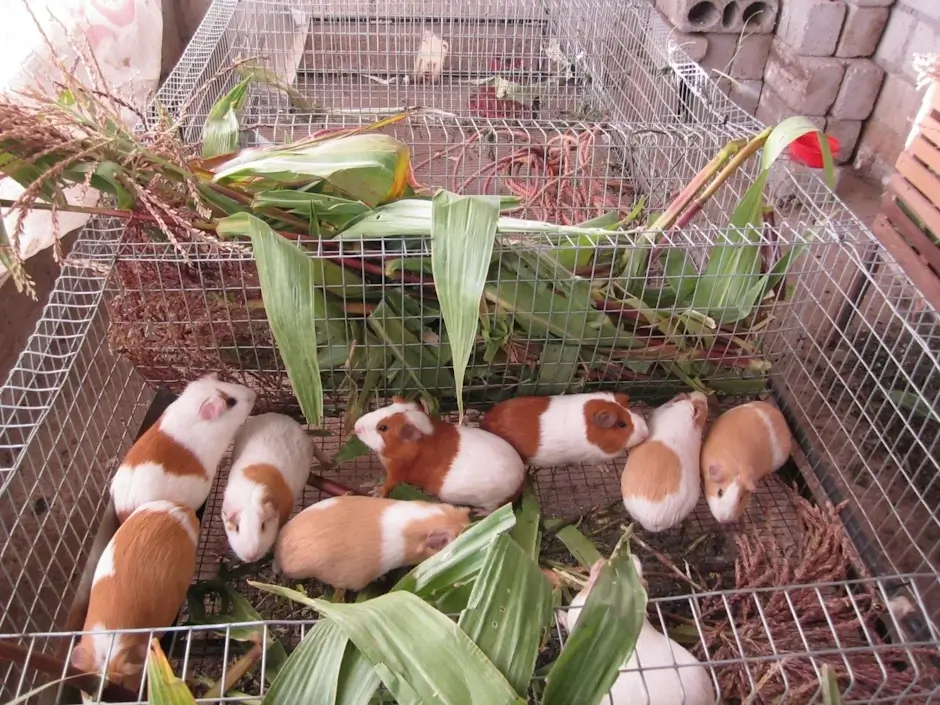
Wrapping Up
In wrapping up, raising guinea pigs for meat in Peru offers a pathway to resilient, culturally rooted farming that nourishes both people and the environment.
FAQ
What are the best breeds for raising guinea pigs for meat in Peru?
The top breeds include the “Peru,” Andino, and Inti, selected for rapid growth and high meat yield. The “Peru” breed reaches 1 kg in 56 days, ideal for efficient production, while Andino suits highland climates with 70% carcass yield. Start with certified stock from institutes like IVITA to ensure health and genetics, allowing 3-5 pups per litter for sustainable herds. These breeds outperform Criollo in commercial settings, per La Molina University data, making them perfect for beginners aiming for market-ready animals in 8-12 weeks.
How much does it cost to start a small guinea pig farm in Peru?
Initial setup for 20-50 animals costs 200-500 soles ($50-130 USD), covering breeding pairs at 10-15 soles each, basic enclosures from local materials, and initial feed like alfalfa. Ongoing expenses are low at 50-100 soles monthly for supplements, thanks to scrap-based diets. Returns come quickly, with sales at 15-20 soles per animal yielding profits in 2-3 months. This affordability makes it accessible for smallholders, with manure adding fertilizer value to offset costs.
What is the environmental impact of guinea pig farming compared to other livestock?
Guinea pig farming has a low footprint, using 90% less land and water than cattle while emitting minimal methane. It avoids deforestation, recycling waste as biofertilizer to enrich soils without chemicals. Unlike intensive beef, cuy on scraps cuts feed emissions, supporting biodiversity in Andean farms. Sustainable practices like biogas from manure further lower impacts, making it a green protein source for food security.
How do I prevent common diseases in guinea pig herds?
Focus on biosecurity: quarantine new stock, deworm quarterly with ivermectin, and provide vitamin C-rich feeds to boost immunity, following OIE protocols. Clean enclosures weekly to prevent lymphadenitis, a bacterial issue in Peru, using lime for disinfection. Monitor for parasites via fecal checks and use probiotics to avoid antibiotics, curbing resistance. In my experience, hybrid free-range setups build natural resilience, keeping mortality under 5% with routine vet visits from SENASA-approved professionals.
Can guinea pig farming be profitable for small-scale farmers in Peru?
Yes, with litters every 2-3 months and sales at 15-25 soles per animal, a starter herd of 20 can generate 500-1,000 soles monthly after costs, quadrupling incomes as in Apurimac cooperatives. Market to restaurants or fairs for premiums on organic cuy. Diversify with manure sales for extra revenue. Heifer International reports families add $100 USD monthly, making it viable for rural empowerment.

